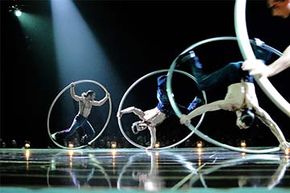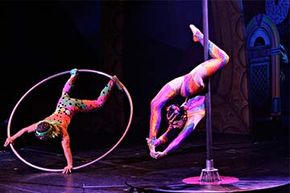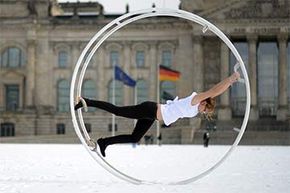You're at the circus. Not the old-fashioned Barnum & Bailey-style circus with lion tamers and "Ladies and gentlemen!" but the modern version popularized by Cirque de Soleil — darker, more exotic and very, very French.
The lights go down and a single spotlight illuminates a man in the center ring. He's alone, except for a large aluminum ring that he grips with one hand like an oversized hula-hoop. With practiced nonchalance, he rolls the heavy ring on its edge, causing it to trace a slow path around him.
Advertisement
Touching the ring again, he sends it into a slow wobble like a giant toppling coin. With perfect timing, the man steps in, out and around the spinning and wobbling ring in a well-choreographed dance.
Then, with athletic precision, the man steps onto the wheel with both feet and grabs the edges with both hands. For a second, he resembles a rolling image of Leonardo da Vinci's famous "Vitruvian Man."
Using the wheel's own momentum, he begins to execute increasingly difficult spins and inversions, turning graceful somersaults and dizzying pirouettes. For the climax, he raises both feet off the wheel and extends his body outward, appearing to almost be carried away by the wheel while somehow still controlling its every motion.
This dazzling spectacle is called the Cyr wheel, or roue Cyr in French. The 33-pound (15-kilogram) ring is named after its inventor, Daniel Cyr, a Canadian circus performer who showcased his simple innovation in 2003 at the Festival Mondial du Cirque de Demain ("Circus of Tomorrow World Festival") in Paris. Cyr (pronounced "seer") won the silver medal for a stunning routine on his homemade apparatus [source: Cirque Eloize].
In little more than a decade, the Cyr wheel has taken the circus world by storm. Hundreds of amateur and professional acrobats, gymnasts and street performers worldwide now use the wheel in their acts, continually testing the limits of this versatile device.
Advertisement



